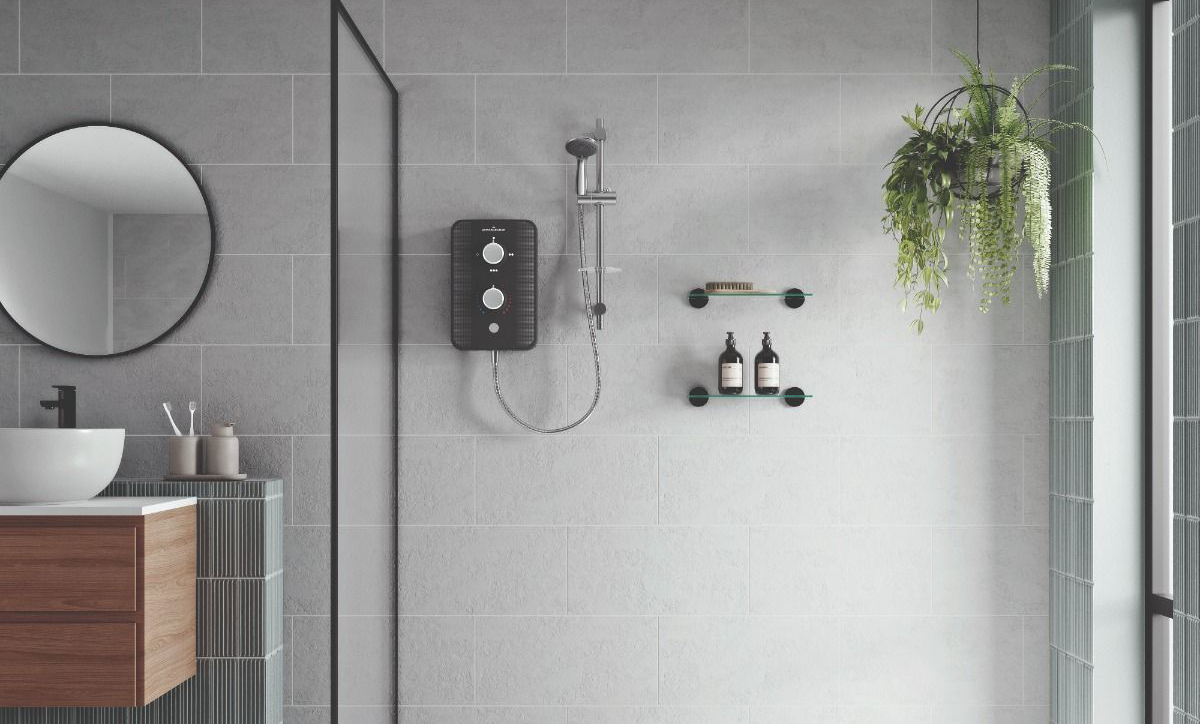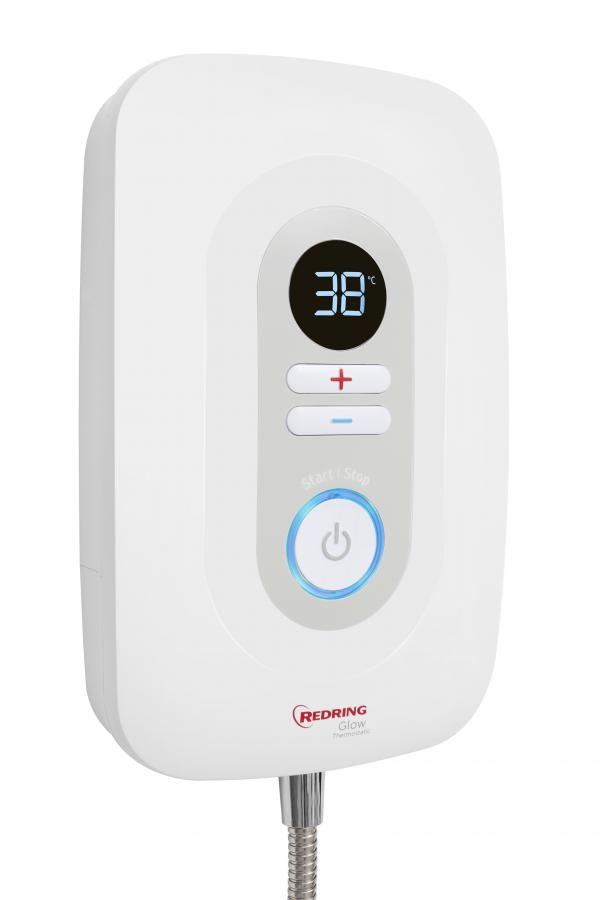Electric Showers Buying Guide

What is an electric shower?
An electric shower is a bathroom fixture that heats water on demand. It operates independently of a central water heating system, utilizing an internal heating element to warm the water as it flows through the unit. Electric showers are convenient as they provide hot water instantly, regardless of the household's water heating setup. They typically have adjustable temperature settings and are energy-efficient, heating only the water needed for the shower. However, they require a separate electrical connection and may have limitations on water pressure and flow rate which can have an impact on whether you're able to install an electric shower.
Why would I choose an electric shower over a thermostatic shower?
Deciding whether to use an electric shower can be tricky due to a few pros and cons to consider. The main competitor to the electric shower is the thermostatic shower. A thermostatic shower is a mixer shower system containing a valve in which water from both hot and cold supplies is mixed consistently, maintaining a steady water temperature.
Electric showers are often preferred over thermostatic showers for several reasons. For example, most electric showers offer almost instant hot water. This is because the heating element is located within the shower unit, so after a second or two, you'll have hot water to shower with. In contrast, with a thermostatic mixer shower, it relies on your boiler. This means you need to wait for the cold water to travel through your pipes and be replaced by hot water.
Your electric shower runs independently of your hot water supply. Cold water is pumped to the shower and heated all at once. This means that if someone else turns on the hot tap elsewhere in the house, it won't be affected. A thermostatic shower relies on that hot water to maintain a consistent flow and temperature. So, if it's interrupted by another use of hot water, the temperature and pressure will change.
Additionally, electric showers are energy-efficient, heating only the water used during the shower and reducing overall energy consumption. However, electric showers may have limitations on water pressure and flow rate, which could impact the shower experience—a drawback less likely in well-designed thermostatic mixer showers.



How an electric shower works
An electric shower works by using an internal heating element to heat the water as it flows through the pipes within the shower. It works in the following process:
-
Water Supply: Cold water from the main supply travels to the shower and enters the unit through an inlet.
-
Flow & Temperature: The user is able to dictate the temperature and pressure levels of the water using the controls on the shower itself
-
Heating Element Activation: Depending on the chosen settings the shower's heating element which is often made on coiled wire, is activated and will heat to a certain level.
-
Water Flow through Heating Element: Cold water flows over the heating element as it travels through the shower. The high resistance of the heating element generates heat when electricity passes through it.
-
Water Heating: As water flows over the heated element, it absorbs the generated heat, raising its temperature. The longer the water is in contact with the heating element, the hotter it becomes.
-
Temperature Regulation: The user can adjust the temperature by controlling the electricity supplied to the heating element. A thermostat within the unit monitors the water temperature and adjusts the power to maintain the desired temperature setting.
-
Mixed Water: The heated water mixes with the remaining cold water, providing a consistent temperature for the user.
-
Shower Outlet: The heated and mixed water is then delivered through the showerhead to the user.
In summary, an electric shower heats cold water using an internal heating element, providing instant hot water on demand. This makes electric showers a convenient and energy-efficient option for homes, particularly in situations where a central water heater may not be ideal.
Q: Can an Electric Shower be connected to a cold mains supply?
A: All instantaneous showers should be connected to the rising mains water supply, unless the unit is a power shower or mixer unit, as there are limitations on water services in order for the unit to perform correctly. Units can be connected to a header tank providing there is adequate head height to generate a minimum of 1 bar pressure.
Q: Does the wiring to my existing electric shower need to be upgraded if I was to fit a higher kilowatt-rated unit?
A: All wiring must be carried out by a fully qualified electrician and must comply with the current wiring regulations to meet the specifications of the unit to be installed.
Q: What can I do if there is not enough mains water pressure to operate an electric shower?
A: If there is insufficient water pressure for your unit it from the COLD water rising mains this would normally be down to a poor service from your service provider “lines could be blocked or restricted”, if this is not the case then your unit could be fed from a header tank with an adequate working head height. If you want all the benefits of an Instantaneous Electric shower then consider purchasing a Galaxy Aqua 9000XP, which is a Pumped Instantaneous Electric shower, that can be installed to the COLD water storage tank.
Q: What is the minimum flow rate and water pressure required for a Galaxy electric shower?
A: The minimum running water pressure for the shower unit is 1 Bar.
Q: What things do I need to think about when replacing an existing electric shower?
A: If replacing an existing unit you must ensure that your water and electrical services are adequate for the kilo-wattage of the unit to be installed.
Q: What size fuse does an electric shower require?
A: The installation must comply with the current wiring regulations to meet the specifications of the unit to be installed. This all depends on the kW rating of the shower unit. Please see below: 7.2kW shower = 32 Amp fuse 7.5kW shower = 40 Amp fuse 8.5kW shower = 40 Amp fuse 9.5kW shower = 40/45 Amp fuse 10.5kW shower = 45 Amp fuse Please note in order to comply with the current building regulations you should have a competent certified installer carry out any electrical work to the IEE Wiring Regulations.
Q: What Electric Shower will suit the mains-fed water system?
A: Any unit except a power shower or mixer unit as these need to be gravity-fed.
Q: Do I need a pump?
A: You can only pump water from a storage tank to feed to a shower; you cannot pump mains water directly to a shower as it goes against local water by-laws.
Q: What effect does the kW rating have on my electric shower?
A: Electric showers only take water from your mains cold water supply and heat this water by passing it over electrically heated elements. The temperature of the water you get from your shower and the flow rate is therefore determined by three key factors:
1. The temperature of your main cold water supply (this can vary from 5°C in winter to 20°C in summer)
2. The heating ability of your element in kW
3. The pressure of your mains water supply in simple terms, the higher you’re chosen shower kW rating the better the potential water flow rate from your shower at your preferred showering temperature. As a guide you can see below how the kW rating affects your shower flow*:
* 8.5kW up to 27% more flow than a 7.5kW heater
* 9.5kW up to 42% more flow than a 7.5kW heater
During Shower Installation
Q: What type of plumbing fitting is required to connect to the inlet of a Galaxy electric shower?
A: An easy fit or compression fitting is required to connect to the unit, providing they meet the specifications of the installation.
Q: When installing an electric shower, what size electric cable is required?
A: The installation must comply with the current wiring regulations to meet the specifications of the unit to be installed. Recommended cable size: 7.2kW shower = 6 mm2 cable size 7.5kW shower = 10 mm2 cable size 8.5kW shower = 10 mm2 cable size 9.5kW shower = 10 mm2 cable size 10.5kW shower = 16mm2 cable size. However please note in order to comply with the current building regulations you should have a competent certified installer carry out any electrical work to the IEE Wiring Regulations.
Q: What happens when an incorrect fuse size is fitted for an electric shower?
A: If the fuse is underrated then the fuse will keep blowing. If the fuse is oversized then if there is an electrical problem then the unit could burn out and this could be a potential fire hazard.
e bottom right-hand side of the unit that can be connected to a water supply coming from the bottom, rear or top of the unit, the electrical connection block is located on the right hand side, mid way and has a knockout section for cable entry.
After Shower Installation
Q: My Electric shower is out of guarantee and has a fault, what can be done?
A: If in the unlikely event of a faulty unit that is out of the manufactures warranty then please contact the manufacturer to discuss further
Q: Water is leaking from the bottom of my unit, what could be the problem?
A: If water is leaking from the base of the unit it could be due to the shower being over-pressurized (a buildup of lime scale or a bent/restricted shower hose) “water will be coming from a small black pipe behind the shower hose”
Q: The flow of water from my Electric shower seems very poor, what could be the problem?
A: If you experience poor flow from your unit this could be due to poor water services or that the unit is being used on half heat setting and trying to achieve a hot shower “increasing the heat setting should increase the water flow rate”.
